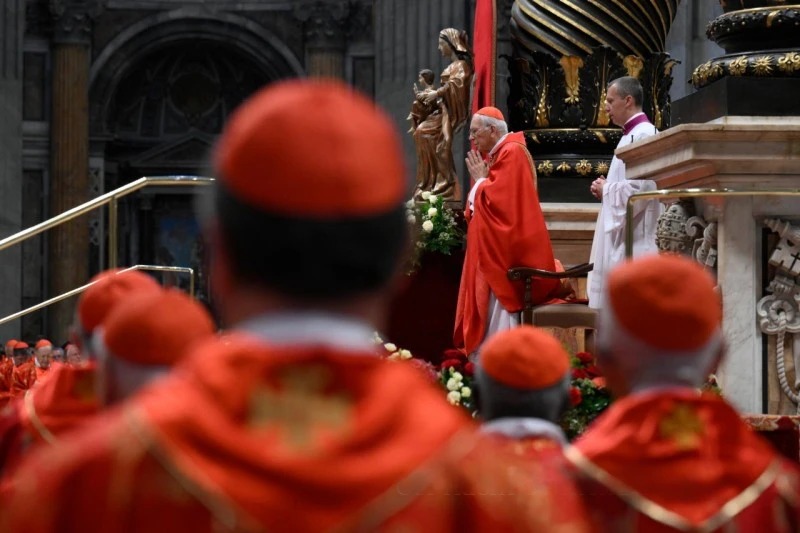Leo XIV, a global pope
The New Global Face of the Catholic Church

Still reeling from the papal election, relaxed now, seeing that our beloved cousin, Monsignor Cristóbal López Romero, has been freed from such a burden, which, according to him, one would have to be crazy to claim, we can’t help but rejoice, not because of his relief from responsibilities—since now that they know him, I’m sure something will fall to him—but rather because of the joy as a Catholic and a priest, because of the worldwide coverage and impact that the death of Francis and the election of Leo XVI have had. It has been front-page news for many days. Words like “conclave,” strange in colloquial language, are now familiar.
As Monsignor Cristóbal says, the power of the Holy Spirit is evident in the election. Simply by observing that in the political world, for example, it would be impossible to reach two-thirds of the votes in one day to elect a candidate, without even knowing each other. According to him. Cardinal Prevost far exceeded this percentage.
Pope Francis sought to universalize the Church, appointing cardinals from across the Christian world. As was customary in the past, Europe, and more specifically Italy, has ceased to be the center of Christianity, both demographically and governmentally.
This globalization, characteristic of religious institutes, unlike monks and diocesans, who are more closely tied to their territory, has led to an Augustinian religious being our pope.
Why Leo? Apparently, according to the new pope, in addition to being the pope who initiated the social doctrine of the Church—Rerum Novarum—thus indicating continuity with the reforms undertaken by Francis, he was also the pope who did much for Catholicism in the United States.
But there is always something more emotional that the connection with his predecessor in a name can suggest. This is the small town where Joachim Pecci, the pope of the poor, was born, Carpineto Romano, a town with fewer than a thousand inhabitants and where the Church of St. Augustine is located. This 13th-century building belonged to the extinct order of the Antoninians and was inhabited in the 14th century by the hermits of St. Augustine, who were, as a movement, the genesis of the current congregation to which the pope belongs. A place beloved by the mendicant order, surrounded by green woods, Pope Leo XIII had restored, intending to convert it into a hospital. Apparently, it had been acquired by the pope’s family after Napoleon’s confiscation, and Leo XIII wanted to revive the complex. Faced with the difficulty of restoring the building to its former glory, he gave it to the Augustinians. Both the town and the monastery are imbued with the influence of Pope Leo XIII. Images and the organ donated by the pope of Rerum Novarum are preserved.
Who is Leo XIV? We have consulted a graphologist about his personality. As you might guess, he’s not one to make noise. In fact, once again, it’s been a surprise. He was one of those cardinals who didn’t make noise; popes didn’t come in and cardinals left. His handwriting indicates that he’s a transparent, sincere person, with firm convictions, open to others, empathetic and communicative, kind and balanced. He’s more about approachability than grand, spectacular gestures. He’s serene, with self-esteem not as high as that of the Argentines, as Pope Francis used to say, explaining a joke about ego, but with enough self-esteem to not feel self-conscious about anyone.
For him, the norm is respected, maintaining a sufficient balance between what is established and the impulse to care that permeates his character.
In his first greeting, he connected with his Peruvian diocese, Chiclayo, thus demonstrating his fidelity to the things he loves. And, having shared his life with so many people from diverse backgrounds, he is well-equipped to be a pastor of the Universal Church.
Our family would have liked a father named Romero, his second surname, but this one is named Martínez. They’re in the same class.
Related

Leo XIII, a papacy between modernity and tradition
Francisco Bobadilla
09 May, 2025
5 min

Leo XIV Arrives
Jesús Ortiz López
08 May, 2025
5 min

Letter to My Children
Nacho Calderón Castro
08 May, 2025
6 min

The Coming Pope: Beyond Speculation, Let Us Trust in the Cardinals and the Holy Spirit
Patricia Jiménez Ramírez
08 May, 2025
3 min
 (EN)
(EN)
 (ES)
(ES)
 (IT)
(IT)

